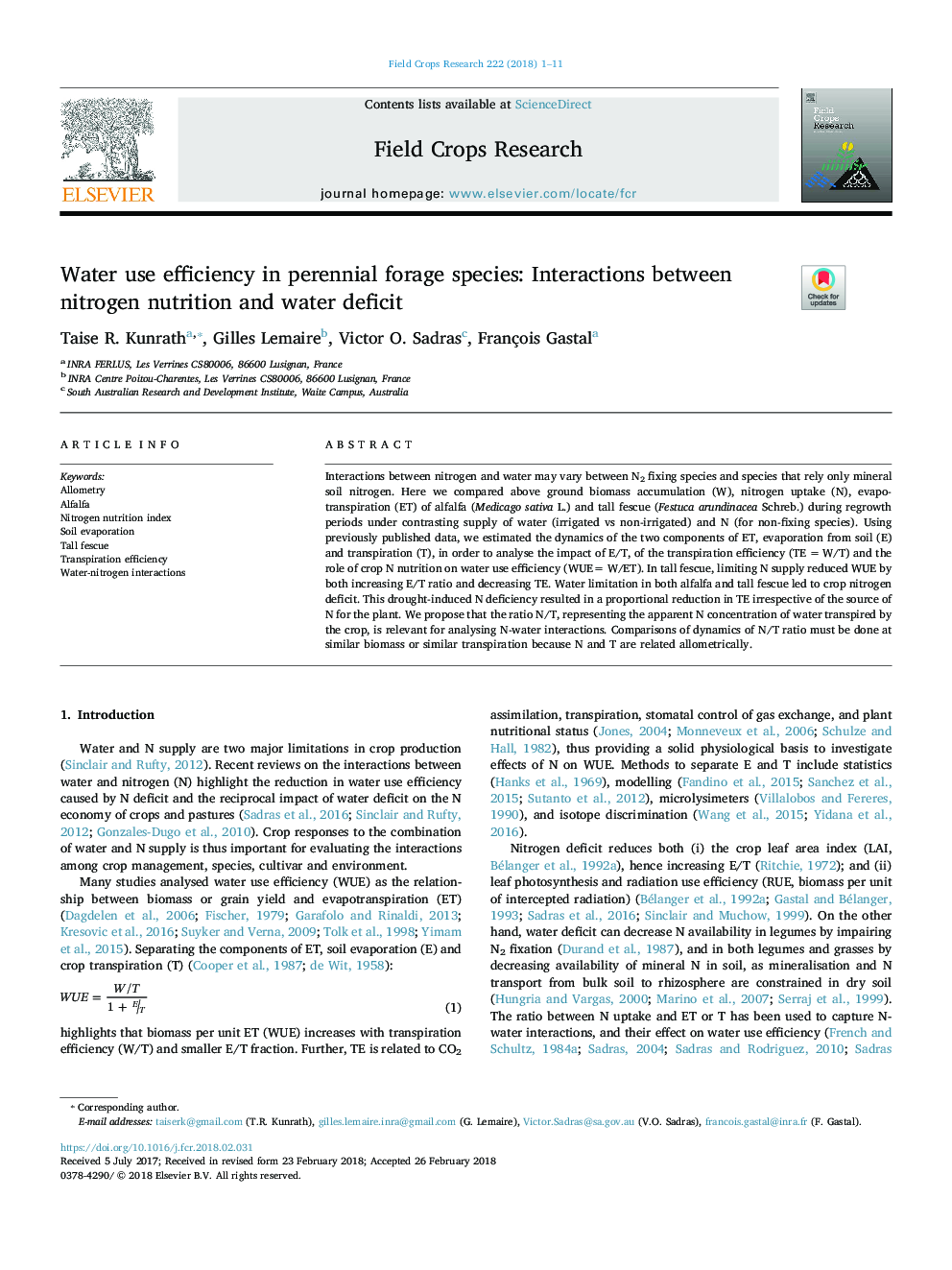| Article ID | Journal | Published Year | Pages | File Type |
|---|---|---|---|---|
| 8879175 | Field Crops Research | 2018 | 11 Pages |
Abstract
Interactions between nitrogen and water may vary between N2 fixing species and species that rely only mineral soil nitrogen. Here we compared above ground biomass accumulation (W), nitrogen uptake (N), evapotranspiration (ET) of alfalfa (Medicago sativa L.) and tall fescue (Festuca arundinacea Schreb.) during regrowth periods under contrasting supply of water (irrigated vs non-irrigated) and N (for non-fixing species). Using previously published data, we estimated the dynamics of the two components of ET, evaporation from soil (E) and transpiration (T), in order to analyse the impact of E/T, of the transpiration efficiency (TEâ¯=â¯W/T) and the role of crop N nutrition on water use efficiency (WUE=â¯W/ET). In tall fescue, limiting N supply reduced WUE by both increasing E/T ratio and decreasing TE. Water limitation in both alfalfa and tall fescue led to crop nitrogen deficit. This drought-induced N deficiency resulted in a proportional reduction in TE irrespective of the source of N for the plant. We propose that the ratio N/T, representing the apparent N concentration of water transpired by the crop, is relevant for analysing N-water interactions. Comparisons of dynamics of N/T ratio must be done at similar biomass or similar transpiration because N and T are related allometrically.
Keywords
Related Topics
Life Sciences
Agricultural and Biological Sciences
Agronomy and Crop Science
Authors
Taise R. Kunrath, Gilles Lemaire, Victor O. Sadras, François Gastal,
